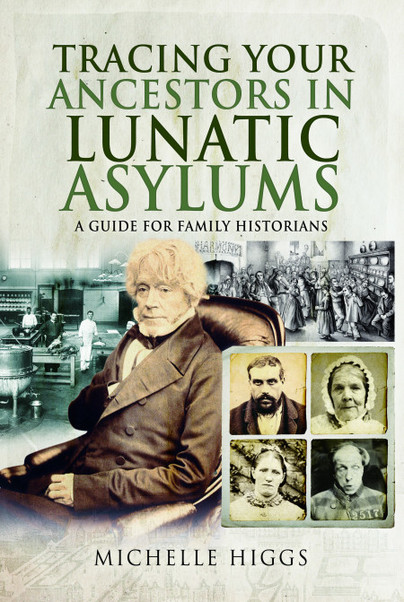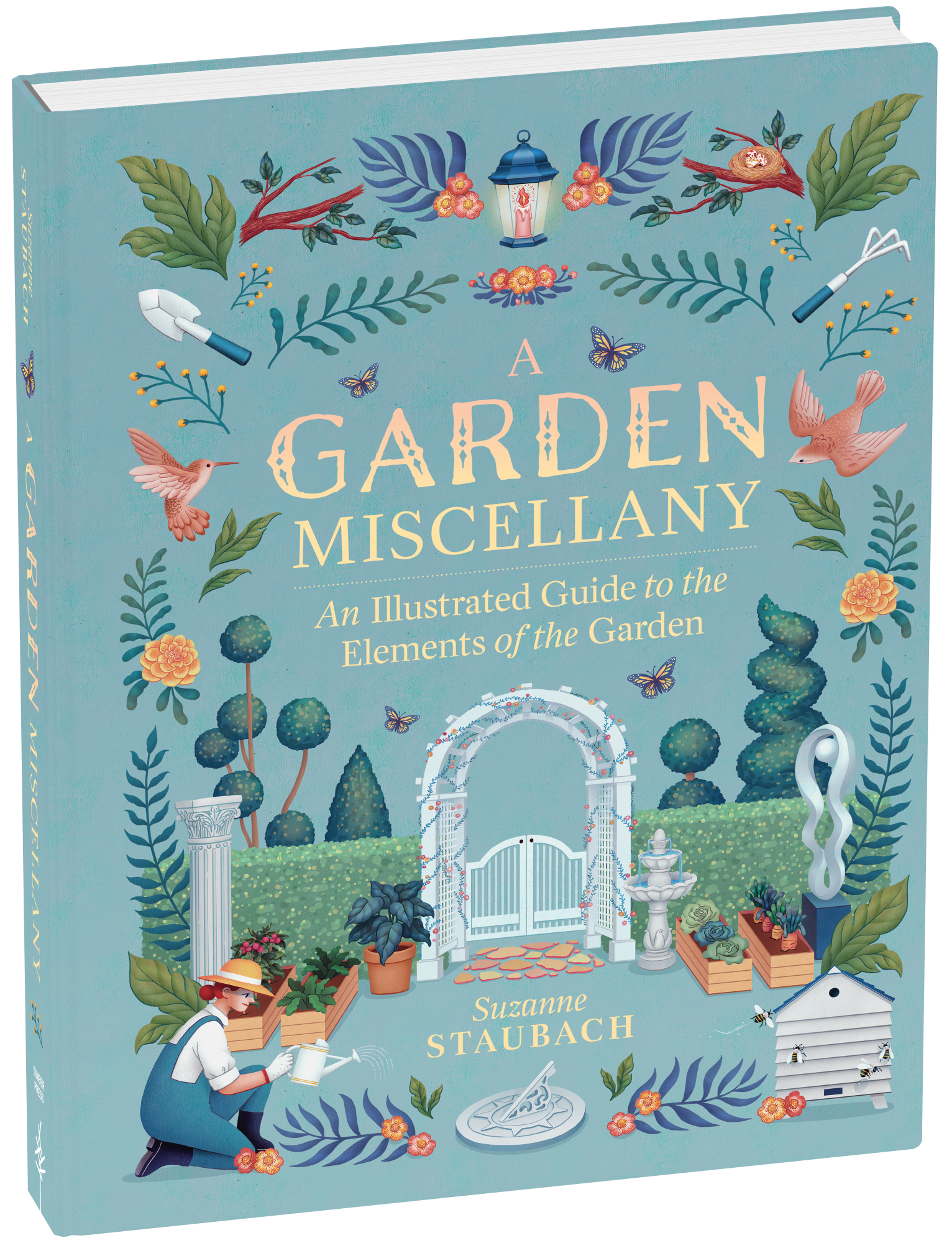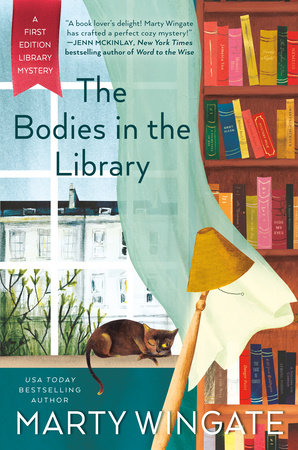Musings on family history, regional history, book reviews, and miscellaneous observations and comments by a genealogist and librarian living near the Great Smoky Mountains in East Tennessee.
Wednesday, October 30, 2019
Tracing Your Ancestors in Lunatic Asylums
Higgs, Michelle. Tracing Your Ancestors in Lunatic Asylums: A Guide for Family Historians. Barnsley: Pen & Sword Family History, 2019.
Higgs provides a highly readable discussion on the institutionalization of British Isles persons suffering from a variety of mental disorders.The majority of institutions discussed are in England, Scotland, or Wales. Higgs shows how attitudes toward the mentally ill evolved over time. The narrative includes several case studies of individuals, providing a list of sources used in each sketch. Near the end she discusses record availability, providing a few examples. As a genealogist, I wish this section had been expanded to include additional record images. Genealogists with family members spending time in an asylum in the United Kingdom will find this book helpful to their research. This review is based on an advance review copy provided through NetGalley with the expectation of an honest review.
Tuesday, October 29, 2019
Can't Judge a Book by Its Murder
Lillard, Amy. Can't Judge a Book by Its Murder. Naperville, Illinois: Poisoned Pen Press, 2019.
A man falls from atop the bookstore to the sidewalk below. The investigating officer initially believes the man committed suicide, but the autopsy reveals poison in his system, confirming the suspicions of those who knew he was unlikely to commit suicide. When Chloe ends up in jail, Arlo begins her own investigation to get her friend freed. Some of the action stretches the imagination. The solution was fairly obvious. Still I enjoyed this mystery set in extreme northern Mississippi. Farmington is the only community in Alcorn County large enough to be a candidate for the fictitious Sugar Springs, but its description doesn't seem to fit the actual city. I read an advance electronic review copy provided through NetGalley in exchange for an honest review.
A Garden Miscellany
Staubach, Suzanne. A Garden Miscellany: An Illustrated Guide to the Elements of the Garden. Portland, Oregon: Timber Press, 2019.
This book is a dictionary of types of gardens, design considerations, and features found in gardens. While it does not provide in-depth information on each, enough is present to satisfy most readers. A bibliography listing additional resources appears in the back, providing opportunities for those interest to gain further knowledge. The illustrations by Julia Yellow provide whimsy and delight for readers and perfectly accompany the book. I received an advance electronic copy through NetGalley with the expectation of an honest review.
Friday, October 25, 2019
Christmas in Newfoundland
Martin, Mike. Christmas in Newfoundland: Memories and Mysteries. Ottawa: Ottawa Press and Publishing, 2019.
Sgt. Windflower remembers Christmases past in this volume. It seemed rather disjointed to me. The author overused "be" verbs, and no editor assisted him in cleaning up the sloppy and dull writing. This was my first and probably last venture into this series. The setting intrigued me, but its brevity is the only reason I did not abandon the read. I received an electronic copy through NetGalley with the expectation of an honest review.
Saturday, October 19, 2019
Early Alabama
Bunn, Mike. Early Alabama: An Illustrated Guide to the Formative Years, 1798-1826. Tuscaloosa: University of Alabama Press, 2019.
The author uses photos, paintings, and maps, mostly color, to illustrate his brief history covering the history of Alabama from the separation of the Mississippi Territory from Georgia until its capital moved to Tuscaloosa in 1826. It spent 1798 to 1816 as part of the Mississippi Territory. I felt some points received better treatment than others. For example, settlement of rural areas received brief mention while coverage of large centers often received more attention tied to an historical figure, such as John Hunt's settlement of Huntsville. The work's bibliography provides readers opportunities to locate works which may provide better treatment in their area of interest in the state's history. The author closes with a historical sites tour which included several sites in Mississippi as well as those in Alabama. The book's illustrations make it interesting, but those seeking a more comprehensive approach to the topic will want to look elsewhere.
Thursday, October 17, 2019
Graze
Dowling, Paul. Graze: Healthy Graze Craze Recipes to Kickstart Your Metabolism. s.l.: s.n., 2019.
Grazing involves eating 6 small meals per day rather than 3 larger ones. Cookbook uses the same ingredients over and over. I'd be completely bored with food if I ate only from recipes in this recipe for a couple weeks. The author uses oatmeal, granolas, quinoa, etc. in abundance. Many recipes are influenced by Hispanic cultures. Recommended for persons seeking this type diet or cookbook, but it's not one for me. I love my Southern foods too much! I received an advance review copy through NetGalley with the expectation of an honest review.
Wednesday, October 16, 2019
National Dictionary Day
October 16 is National Dictionary Day. Here's a tribute to a few dictionaries genealogists use:
These few examples represent the "tip of the iceberg" when it comes to useful dictionaries for genealogical research.
All images from Amazon.
All images from Amazon.
Tuesday, October 15, 2019
Read and Buried
Gates, Eva. Read and Buried. New York: Crooked Lane, 2019.
When the crew working to stabilize the lighthouse discovers a metal box with a diary enclosed, they call the library's director down to the construction hole. Unwilling to go herself, she sends assistant director Lucy Richardson down. When they examine it with gloves and tweezers, they find a couple of pieces of paper tucked inside. One is a map. The other appears to be a coded message. Several persons were present when the discovery was made. When Lucy returns to the lighthouse library after an evening out with Connor, they discover the door has been smashed and find a historical society member no one likes murdered. The diary itself remains in Bertie's desk, but the two pieces of paper disappeared. The deceased man provided funding for the historical society including the upcoming Settlers' Day festivities. Lucy, of course, becomes involved even though she tries to stay out of the investigation. Suspects and motives abound. With a fun setting, fascinating historical angle, and better-than-average writing, this series continues to impress me. I hope the publisher's proofreaders and editors catch the missing words, double periods, and other proof-reading errors before its release. The review is based on an electronic advance copy obtained through NetGalley with the expectation of an honest review.
Monday, October 14, 2019
national lowercase day
october 14 is "national lowercase day."
a public domain poem by e. e. cummings seems appropriate to honor the day:
songs (ii)
when life is quite through with
and leaves say alas,
much is to do
for the swallow,that closes
a flight in the blue;
when love's had his tears out,
perhaps shall pass
a million years
(while a bee dozes
on the poppies,the dears;
when all's done and said,and
under the grass
lies her head
by oaks and roses
deliberated.)
a public domain poem by e. e. cummings seems appropriate to honor the day:
songs (ii)
when life is quite through with
and leaves say alas,
much is to do
for the swallow,that closes
a flight in the blue;
when love's had his tears out,
perhaps shall pass
a million years
(while a bee dozes
on the poppies,the dears;
when all's done and said,and
under the grass
lies her head
by oaks and roses
deliberated.)
Tuesday, October 08, 2019
The Bodies in the Library
Wingate, Marty. The Bodies in the Library. New York: Berkley Prime Crime, 2019.
Hayley Burke, curator of a library devoted to the golden age of mysteries, has never read a mystery in her life. The compensation and benefit of living on the premises attract her to this dream job. Mrs. Woolgar, secretary to the library's founder Lady Georgiana Fowling, lives in the building also. Hayley tries to find ways to improve the library's visibility and invites a group of mystery writers to meet there. When a group member's body appears in the library after hours and after the group left, Hayley inserts herself into the police investigation to mitigate damage to the library and the writers' group. I never warmed to Hayley--perhaps because of her lack of affection for the mystery genre. I found the book easy to put down. The plot seemed convoluted. More insights into the police investigation and less of the amateur sleuth's attempts would improve the book.The library's cat Bunter was my favorite character. I received an advance review copy through GoodReads. While a review is encouraged, it was not required.
Sunday, October 06, 2019
Mad Hatter Day
 |
| Original illustration (1865), by John Tenniel (February 28, 1820 - February 25, 1914), of Lewis Carroll's novel, Alice in Wonderland. |
Sounds like a good excuse for a tea party!
Thursday, October 03, 2019
Along the Tapajós
Vilela, Fernando. Along the Tapajós. Translated by Daniel Hahn. s.l.: Amazon Crossing, 2019.
I enjoyed this story about persons living along the Tapajós River system who must move when the rainy season arrives each winter. In this story, they forget their pet turtle, and the children sneak out one night to retrieve the turtle from the now flooded village. They encounter an anaconda. The illustrations were okay but not outstanding.
Wednesday, October 02, 2019
Women and the Law
In my library-related work, I often run across books potentially useful to genealogists. One such book is Women and the Law: The Unfinished Revolution by Leo Kanowitz. It was published by the University of New Mexico Press in 1969. Chapter two which talks about coverture and married women's property rights especially appear useful.
Tuesday, October 01, 2019
National Homemade Cookies Day
Apparently October 1 is "National Homemade Cookie Day." I don't bake a lot of cookies for myself, but I occasionally make a batch for something at church or work. A batch simply provides too much temptation when kept at home.
Since my mother worked when I was young, we rarely had homemade cookies at the house. Oh, she'd occasionally make some, but she'd usually make pie or cake instead.
When I was in middle school, we learned to make M & M cookies like those pictured above in our home ec class. I took the recipe home with me, and I began to bake an occasional batch of cookies.
My Aunt Rae kept homemade cookies on hand at her house--mainly because Uncle Bud loved them so much.
The Christmas Card Crime and Other Stories
Edwards, Martin, editor. The Christmas Card Crime and Other Stories. Scottsdale, Arizona: Poisoned Pen Press, 2019.
As in most collections, some stories are better than others.
"A Christmas Tragedy" by Baroness Orczy
Although occurring at Christmas, the story is not Christmas-y. It’s a rather boring story in which Lady Molly identifies the killer of Major Ceely. Suspicion fell to his daughter’s secret boyfriend who maintained his innocence.
"By the Sword" by Selwyn Jepson
I didn’t like this one. I was distracted while reading it, but I didn’t like it well enough to go back and read the rest of it.
"The Christmas Card Crime" by Donald Stuart
Interesting story involving passengers on a train impeded by snow with the focus being on a girl with a partial Christmas card.
"The Motive" by Ronald Knox
Westmacott waits for Robinson to board the train. Although Robinson had not shown up, Westmacott boards after receiving a message when seems to ease his mind. Robinson boards near departure time. The two men share adjoining compartments. Robinson asks for a “wake up” call. When it is time for him to leave the train, he is not there. What happened to him?
"Blind Man’s Hood" by Carter Dickson
Rodney and Muriel Hunter arrive late at “Clearlawns,” and their hosts are out. However, a woman tells them the story of an unsolved murder that occurred years ago at the castle while they await their hosts to return from a church function.
"Paul Temple’s White Christmas" by Francis Durbridge
Kind of resembles a very short spy story. Other than the references to snow and Christmas, it could have been set any time.
"Sister Bessie or Your Old Leech" by Cyril Hare
Rather boring and not much mystery to this tale. Bessie feigns death, and Timothy rifles through her things in search of the letter before being confronted by Bessie herself. He kills Bessie but then learns a lesson.
"A Bit of Wire-Pulling" by E. C. R. Lorac
An inspector recalls an account of a man who was shot while he was in the room. The solution was obvious from the moment the inspector told his observations of that night.
"Pattern of Revenge" by John Bude
The wrong man is sent to prison for a murder. The evidence pointed to him because of his peg leg, but three years later another man confesses to the crime on his death bed.
"Crime at Lark Cottage" by John Bingham
John Bradley stops at a home near Skandale where a woman and her daughter reside. It is nearing Christmas as they are decorating the Christmas tree. The woman seems frightened. Bradley sees a wedding photo of the woman and a report of her husband’s escape from jail. As noises are heard, the woman becomes more frightened, and Bradley suggests he should go on to town.
"‘Twixt the Cup and the Lip" by Julian Symons
Thieves plan a heist of Russian jewels, but it doesn’t go exactly according to their plans.
Best story: "The Christmas Card Crime" by Donald Stuart
Worst story: "By the Sword" by Selwyn Jepson
Subscribe to:
Posts (Atom)


























